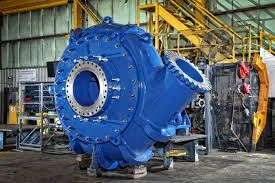Sundanese
- Afrikaans
- Albanian
- Amharic
- Arabic
- Armenian
- Azerbaijani
- Basque
- Belarusian
- Bengali
- Bosnian
- Bulgarian
- Catalan
- Cebuano
- Corsican
- Croatian
- Czech
- Danish
- Dutch
- English
- Esperanto
- Estonian
- Finnish
- French
- Frisian
- Galician
- Georgian
- German
- Greek
- Gujarati
- Haitian Creole
- hausa
- hawaiian
- Hebrew
- Hindi
- Miao
- Hungarian
- Icelandic
- igbo
- Indonesian
- irish
- Italian
- Japanese
- Javanese
- Kannada
- kazakh
- Khmer
- Rwandese
- Korean
- Kurdish
- Kyrgyz
- Lao
- Latin
- Latvian
- Lithuanian
- Luxembourgish
- Macedonian
- Malgashi
- Malay
- Malayalam
- Maltese
- Maori
- Marathi
- Mongolian
- Myanmar
- Nepali
- Norwegian
- Norwegian
- Occitan
- Pashto
- Persian
- Polish
- Portuguese
- Punjabi
- Romanian
- Russian
- Samoan
- Scottish Gaelic
- Serbian
- Sesotho
- Shona
- Sindhi
- Sinhala
- Slovak
- Slovenian
- Somali
- Spanish
- Sundanese
- Swahili
- Swedish
- Tagalog
- Tajik
- Tamil
- Tatar
- Telugu
- Thai
- Turkish
- Turkmen
- Ukrainian
- Urdu
- Uighur
- Uzbek
- Vietnamese
- Welsh
- Bantu
- Yiddish
- Yoruba
- Zulu
Telephone: +86 13120555503
Email: frank@cypump.com
Jul . 30, 2024 05:46 Back to list
Exploring the Functionality and Importance of Modern Sewage Pump Systems in Wastewater Management
Understanding Sewage Pump Systems An Essential Component of Wastewater Management
Sewage pump systems play a crucial role in modern wastewater management, ensuring that effluent is efficiently transported from residential, commercial, and industrial sources to treatment facilities. These systems are designed to handle the movement of sewage and wastewater, even in situations where gravity alone cannot effectively propel waste away from a property. This article explores the importance, function, and components of sewage pump systems, highlighting their significance in maintaining public health and environmental sustainability.
The Importance of Sewage Pump Systems
As urban areas continue to expand and the demand for effective wastewater management increases, sewage pump systems have become indispensable. They are particularly vital in low-lying areas where gravity drainage is insufficient, as well as in places with high groundwater levels that can impede natural flow. Without efficient sewage pump systems, communities would face serious issues, including sewage backups, contamination of drinking water supplies, and unsanitary conditions that could lead to public health crises.
How Sewage Pump Systems Work
At the heart of a sewage pump system is the pump itself, which is designed to lift and transport wastewater from its source to a designated disposal point, usually a municipal treatment facility. The pumps used in these systems can be submersible or non-submersible, with submersible pumps being placed directly into the sewage pit or tank. These pumps are equipped with an impeller that creates suction, allowing them to move solid and liquid waste efficiently.
When wastewater flows into a sump basin or pit where the pump is located, it triggers a float switch that activates the pump. As the pump operates, it lifts the sewage through a discharge pipe and propels it towards the sewer line or treatment facility. Some systems are equipped with additional features like grinders or macerators to break down solids before pumping, ensuring a smooth flow and reducing the risk of clogs.
Components of Sewage Pump Systems
A typical sewage pump system comprises several key components, including
sewage pump systems

1. Sewage Pump The primary device that moves wastewater. The choice of pump depends on factors like the type of sewage, the required lift height, and the distance to the discharge point.
2. Sump Basin A container that collects the wastewater. It is typically installed below ground and must be adequately sealed to prevent odors and leaks.
3. Discharge Pipe The piping that carries the pumped sewage away from the sump basin to the connection point with the sewer line or treatment facility.
4. Float Switch A device that detects the water level in the sump basin and automatically activates the pump when the level rises to a certain point.
5. Check Valve This prevents backflow of sewage into the sump basin when the pump is turned off, ensuring that the system remains efficient and operational.
Maintenance and Best Practices
To ensure optimal functionality, sewage pump systems require regular maintenance. Homeowners and facility managers should periodically inspect the pump for wear, check the float switch for proper operation, and clean the sump basin to remove any debris. Preventative maintenance can extend the life of the pump and prevent costly emergency repairs.
In conclusion, sewage pump systems are vital for effective wastewater management, particularly in areas where natural drainage is inadequate. By understanding how these systems work and ensuring they are well-maintained, communities can protect public health and the environment. Investing in reliable sewage pump systems not only addresses immediate waste management challenges but also contributes to sustainable urban development and the overall well-being of society.
-
Custom Drilling Mud and Slurry Pump Supplier - High Efficiency, Tailored Solutions
NewsJun.10,2025
-
Supply Vertical Submersible Sewage Pump High-Efficiency WQ/QW Pumps Supplier
NewsJun.10,2025
-
Premium Sewage Ejection System & Pumps Efficient Waste Removal
NewsJun.09,2025
-
Premium Wholesale Slurry Pump Impellers Durable & Efficient Slurry Handling
NewsJun.09,2025
-
Top Sewage Pump Companies Durable Industrial Solutions for Efficiency
NewsJun.09,2025
-
Heavy Duty Slurry Pumps - OEM High Performance & Bulk Wholesale
NewsJun.09,2025










